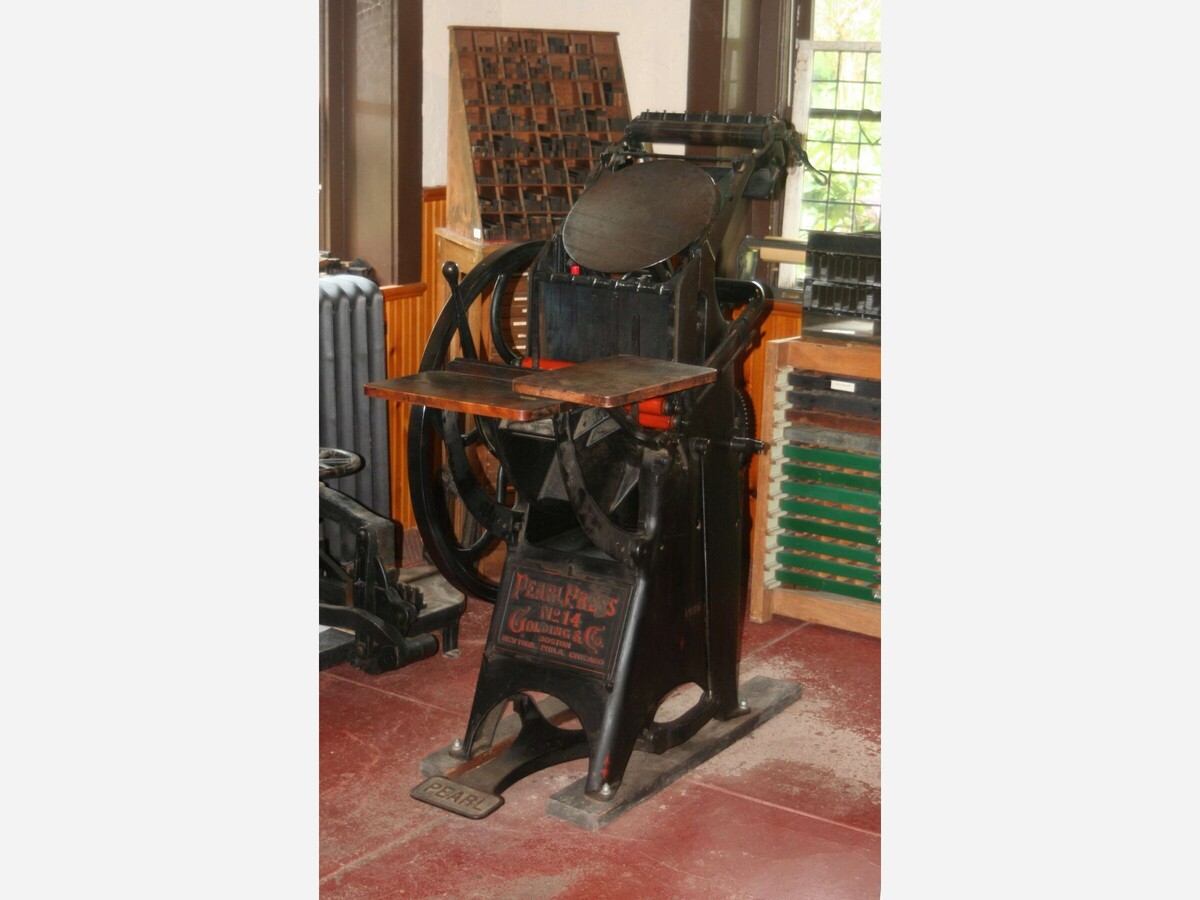Image


Above, Pearl letterpress, manufactured by Golding, used by the Roycroft arts and crafts community near Buffalo, NY.
Printing can seem a humdrum subject these days. The means of printing are ubiquitous and with devices that display print – and much more – always at hand, it can be hard to imagine the critical strides that came before. Most of us have heard of Gutenberg, and know that his Bible upended western social, cultural, and religious history. Fewer know that many of the innovations that Gutenberg perfected were birthed first in China.
But beyond Gutenberg, the pages are, so to speak, mostly blank for most folks.
Briefly, there were continued improvements in printing presses that used movable type. Famously, our Ben Franklin was a master of that technology in his day. The 19th century saw remarkable improvements in “letter press” printing (the technology most directly descended from Gutenberg) as well as the application of mechanical power such as the steam engine to both letter press and the new rotary presses. Late in the century “hot type” made the hand setting of type unnecessary.
Into this environment came William H. Golding. Managing a supply company, The Printer Manufacturing Company in Boston, Golding began to come up with improvements for printing equipment, many of which he patented. And, by 1875, the company was renamed Golding & Co. The company’s main products were efficient, rugged, and affordable letterpress printers capable of producing hundreds of pages per hour. Initially hand operated, some products were given electric motors at the end of the century as that technology matured.
According to at least one source, the business was not always on a solid footing. Indeed, the low cost of some of the products had encouraged their adoption by individuals or businesses that wanted to do their own printing – annoying professional customers that were exclusively focused on printing.
But Golding was fortunate to hire Henry L. Bullen, initially just to produce a company newsletter. But the man had natural sales and marketing talent and, once given greater responsibilities, soon had the company on a path to growth and profitability in its consolidated sales and manufacturing facility at Fort Square in Boston (between Post Office Square and Fort Point Channel). He also added innovations of his own to the products.

Above, Golding factory in Boston, 1884
By 1906, according to author Stephen O. Saxe, who interviewed Golding’s surviving daughter late in the 20th century, the company had outgrown its Boston facility, so Golding built a new and larger factory in Franklin, currently the site of the Station 117 apartments. He moved his growing family into a home on Alpine Street in Franklin, and continued to be active in the business until his death in 1916.
The company operated independently from Franklin until the mid-1920s, at which point it was purchased by Thompson Press, which manufactured a printing press developed by Colt. Thompson gradually phased out the Golding product line, but the patterns for making some of the products found their way to a company in Dedham, which continued to manufacture the same product, minus the Golding nameplate, into the 1950s.
Golding presses are highly regarded by aficionados who are keeping alive the art of printing with movable type. And, the Franklin Historical Museum has an excellent example of a Golding machine donated by a family in Connecticut that recognized the machine’s historical importance – and felt compelled to return it to its ‘birthplace.’